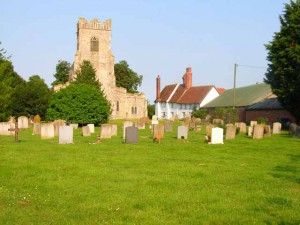[Editor’s note: This post originally appeared in Vita Brevis on 6 June 2014.]

Over the last five months, Vita Brevis has featured a number of blog posts about the Great Migration Study Project and related subjects. Robert Charles Anderson, the project’s director, has written on the topic, as have Alicia Crane Williams and Roger Thompson. Bob’s posts tend to focus on his continuing research in this area, whether it is his trips to Salt Lake City to review a thorny question about identity or the latest literature on the subject as he prepares to write a book tentatively entitled Puritan Pedigrees: The Deep Roots of the Great Migration to New England. Other blog posts have delved into some of the larger issues and trends of the Great Migration: the populations that chose to travel across unwelcoming seas to an uncertain future in New England, and the waning importance of a “top-down” model of financing migration as a popular “bottom-up” model took its place.
Alicia’s work on the Early New England Families Study Project means that she is constantly considering the makeup of the Great Migration generation (1620–1640) in relation to the group (often including the offspring of the Great Migration passengers) that is the focus of her work: those people who married between 1641 and 1700. She has also written an introduction to the Great Migration project, one pointing out the rationale for including one member of a couple in one project or the other: the husband arrived in 1631, and so belongs to the Great Migration Study Project; the wife outlived her husband, remarried a man who arrived in 1642, and had a second family – they belong to the Early New England Families Study Project. Thus far she has three women who, while treated with a husband in the earlier series, merit inclusion – and their own entry – in her study project.
Roger – the author of several books on seventeenth-century New England towns – writes about the settlement of Charlestown during the 1630s, pointing out the way that the origins of the early settlers shaped their choices. As so many of them came from Stepney and Southwark, and belonged to trading families very much at home on the high seas, Charlestown residents remained connected to family networks in England in a way that many New Englanders did not. He points to three other places of origin for the first generation of Charlestown settlers: Dorset, Gloucestershire, and Bedfordshire, each with its own local culture transported bodily across the Atlantic.
I have written about my reading of the Winthrop Papers as I prepare to write a new genealogy of the Winthrop family. My blog posts have touched on Winthrop family dynamics, from AdamA Winthrop’s diary to Thomas Fones’ despairing account of his headstrong daughter Bessy’s dalliance with her cousin Henry2 Winthrop. Edward Howes’ charming letters to his college chum John2 Winthrop shrink the Atlantic, the Winthrop women (and their kinsmen) advertise for “serviceable” maidservants, and Lucy2 Downing flirts outrageously with Thomas Eyre, William Norton, and John Harwood, much to her parents’ bemusement. My most recent post looks at the long life of Governor Winthrop’s sixth son, Deane2 Winthrop (1623–1704).
There’s a lot of difference between the picture of St. Bartholomew’s Groton shown with this article and one I took in 1987 from a similar place. Then it looked forgotten; the burying ground was overgrown with weeds. In this picture it’s all tidy. I wonder what caused the change.
Good Morning John. This is an interesting blog re the Winthrop Family. I have links to the family along with Dudleys, Thing Family, Hiltons and many other families who are or were linked together. There are many Mayflower links within our family as well. That was a fascinating group of our Ancestry who came from Leyden via England and eventually settled in New England. My Dad was born in Haverhill, Mass. in 1901 although his parents were in Mass. for only about 5 years and then moved back to their farm in Carleton, Yarmouth Co., Nova Scotia, Canada. I have a huge link to my Grandmother Margaret Archibald Hilton and I am finding more links on a day to day basis. I have a pdf book on my computer of over 1100 pages and another update -printed of over 200 pages. Family history is a fascinating study. I received a 1 year membership to the NEHGS on Nov 25, 2015 -one day after my birthday for which I am very thankful. A kindly Anonymous Donor gave me the membership. Thank you John and all of the staff at NEHGS for the fascinating info that you send to us on a daily basis. Thank you also to many members who also help us with our History Lessons. School never ends in our lives. Sincere Best Wishes to all, Paul Morris Hilton.